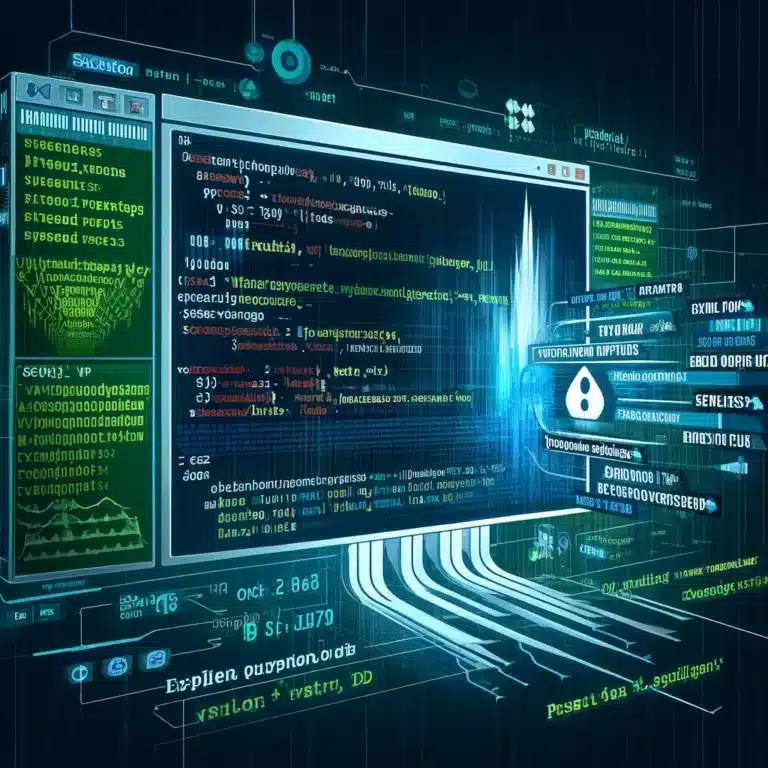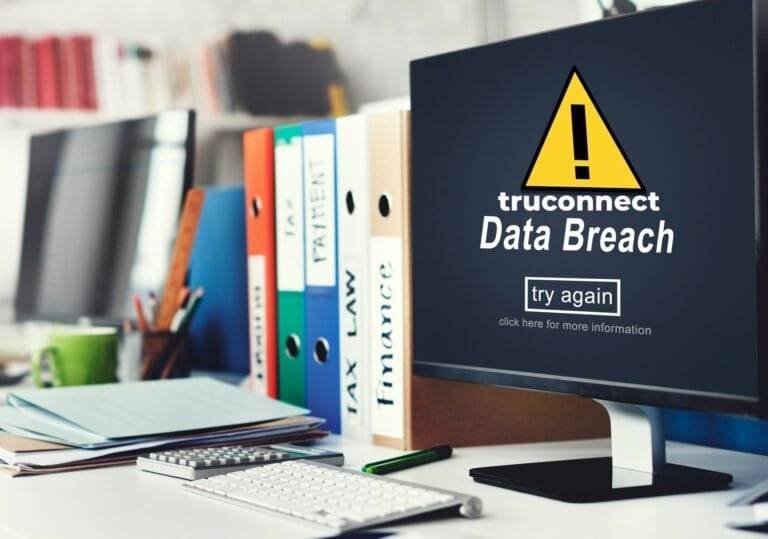Common Cybersecurity Vulnerabilities in Industrial Control Systems
Industrial control systems (ICS) are essential to the management of vital activities in many different industries in today’s networked environment. However, because of its connection with digital networks, numerous types of cybersecurity flaws have been established, seriously endangering data security and operational integrity.
Introduction to Industrial Control Systems
A wide range of technologies are included in industrial control systems, which are intended to regulate and observe industrial operations. These technologies automate and control vital processes in everything from industrial facilities to electricity grids, ensuring productivity and efficiency across a range of industries.
Understanding Cybersecurity in Industrial Control Systems
Industrial control systems (ICS) are the interface between digital technologies and physical processes. In contrast to standard IT systems, ICSs are in charge of managing and supervising operational procedures and vital infrastructure in a variety of industries, including manufacturing, transportation, energy, and more.
Significance of Cybersecurity in ICS
Unprecedented efficiency is brought about by the integration of ICS with linked networks, however, this also leaves these systems vulnerable to cyberattacks. One cannot stress the importance of cybersecurity in ICS. These systems control everything from electricity grids to water treatment facilities, which makes them appealing targets for cyberattacks aiming to take down vital infrastructure or harm large areas of the economy.
Unique Challenges in ICS Security
ICS security operates in a very different environment than traditional IT security. Ensuring security in ICS environments includes safeguarding physical processes, machinery, and vital infrastructure in addition to data protection. Because continuous performance is necessary for real-time operation, preventing and mitigating cyber attacks is of greatest significance. ICS networks frequently consist of older systems that were not intended to be secure. They could be open for misuse as they don’t have encryption or built-in security measures. Furthermore, these systems may not receive regular updates or fixes due to their extended duration, which results in persistent vulnerabilities.
Bursting the Myth of Isolated Systems

In the past, ICS offered an extra degree of security by operating independently of other networks. This paradigm has been challenged by the contemporary trend toward connectedness known as the Industrial Internet of Things (IIoT). An era of smart factories, smart grids, and networked systems has been brought in by the convergence of IT and OT, greatly increasing the attack surface for possible threats.
The variety of systems and technologies used in ICS cybersecurity contributes to its complexity. Every component, including human-machine interfaces (HMIs) and programmable logic controllers (PLCs), has specific vulnerabilities. Keeping these disparate components secure requires a sophisticated strategy that takes into account every level of the system architecture.
The basis for appreciating the seriousness of vulnerabilities and the urgency to put strong security measures in place is laid by an understanding of the crucial role that cybersecurity plays in the context of industrial control systems.
Common Vulnerabilities in Industrial Control Systems
Weak Authentication and Access Control
Vulnerabilities in industrial control systems are often caused by weak authentication procedures and inadequate access controls. These systems are vulnerable to unwanted access due to default or simple-to-guess passwords, a lack of multifactor authentication, and inadequate user access control, which could result in a hostile takeover of vital functions.
Lack of Regular Updates and Patch Management
An important risk to ICS security is the lack of patch management and routine upgrades. Many control systems are still operating with outdated firmware or software, which leaves known vulnerabilities unpatched and open to attack by attackers. The danger of exploitation increases when fixes are not applied on time.
Inadequate Network Segmentation
Vulnerabilities arise from improperly segmented networks in ICS setups. Without proper segmentation, a flat network structure makes it possible for threats to travel laterally across linked systems, which speeds up the spread of malware and unauthorized access and affects crucial components.
Vulnerable Communication Protocols
Industrial control systems often use outdated communication protocols with no authentication or encryption features. These outdated protocols leave command information and sensitive data vulnerable to possible tampering or illegal access. They are also prone to interception and manipulation.
Human Error and Insider Threats

The security of ICS is seriously threatened by insider threats and human mistakes. Strict access controls and ongoing training programs are necessary because careless behavior, unintentional errors, or hostile actions by staff members or insiders may compromise system integrity and reveal vulnerabilities.
Physical Security Risks
Control systems that are physically accessible represent a serious risk. Unauthorized physical access to equipment or infrastructure can result in theft, sabotage, or tampering, which can interrupt operations and perhaps cause extensive harm.
Impact of Cybersecurity Vulnerabilities
Industrial control system security vulnerabilities have many more consequences than just digital breaches. The possible outcomes include a variety of effects on public safety as well as industries and economies.
Disruption of Operations
Cyberattacks targeting industrial control systems have the potential to seriously impair business operations. A successful breach has the potential to stop production lines, interrupt transportation networks, and cut off vital utilities like the water and power supply. In addition to causing large financial losses, the ensuing downtime has an adverse effect on productivity and service delivery, which impacts both businesses and customers.
Compromised Safety Measures
Critical infrastructure security measures are frequently controlled by industrial control systems. Undermining these systems may put security measures in danger and result in mishaps, broken machinery, or environmental dangers. For example, interfering with nuclear power plant control systems might seriously endanger the environment and human health.
Financial Losses and Reputational Damage
Cybersecurity breaches in industrial environments can have a stunning financial impact. Companies may suffer legal action, fines from authorities, and long-term harm to their reputation in addition to immediate operating losses. It can be difficult to rebuild credibility and trust following a serious breach, which can affect market share and investor confidence.
National Security Concerns
The security and stability of a country depend on some essential infrastructure components, such as transportation and electricity networks. Breach attempts on these systems not only interfere with day-to-day activities but also endanger national security. They can unleash widespread chaos or weaken a nation’s resilient infrastructure when employed as a tool of cyber warfare.
Case Studies Highlighting Real-World Impacts
The real-world consequences of cyberattacks on industrial control systems are demonstrated by some cases. The vulnerability of vital infrastructure and the practical repercussions of successful cyber invasions are highlighted by incidents like the Stuxnet attack on Iran’s nuclear facilities and the Colonial Pipeline ransomware attack in the United States.
It is critical to take proactive steps to improve defenses and reduce the risks associated with cybersecurity vulnerabilities in industrial control systems because of the possible effects these vulnerabilities may have. Setting cybersecurity as a top priority protects not just against data breaches but also the entire basis of our globalized society.
Best Practices for Mitigating Vulnerabilities
Industrial control systems (ICS) have inherent vulnerabilities that must be addressed, which calls for the deployment of a strong cybersecurity architecture. The following are important best practices meant to protect these systems against possible attacks:
Implementing Strong Authentication Methods
Access control is improved by enforcing strong authentication procedures like biometric verification and multifactor authentication (MFA). By doing this, the possibility of unauthorized access is reduced, and the effect of hacked credentials is lessened.
Regular Updates and Patch Management
It is imperative to retain a proactive stance when it comes to software and firmware updates. Applying patches and updates regularly ensures that known vulnerabilities are quickly fixed, reducing the possibility of threat actors exploiting them.
Network Segmentation Strategies

By compartmentalizing the ICS environment, a strong network segmentation approach may be put into practice. Because of this isolation, threats are unable to spread laterally, which lessens their impact and lowers the possibility of a widespread compromise of the system.
Securing Communication Protocols
Transmitting data in a secure and encrypted manner is enhanced by upgrading communication protocols to more secure alternatives. Using protocols that have authentication built in improves security against manipulation and interception.
Employee Training and Awareness
It is essential to invest in thorough training programs for staff members. Insider attacks and human error can be reduced by training staff on cybersecurity best practices, identifying phishing efforts, and promoting a security-conscious culture.
Enhancing Physical Security Measures
To prevent unauthorized physical incursion, physical security measures like surveillance and restricted access can be improved. To stop tampering and sabotage, ICS components must be physically secured.
Future Trends and Technologies in ICS Security
The field of industrial control systems (ICS) security is experiencing promising developments and advanced technologies that have the potential to completely transform cyber threat defense as the cybersecurity landscape continues to change.
Advancements in Cybersecurity for ICS
- Machine Learning and Artificial Intelligence (AI): Proactive threat identification and response are made possible by the integration of artificial intelligence (AI) and machine learning. By analyzing enormous volumes of data and quickly spotting irregularities and possible threats, these technologies improve ICS security.
- Blockchain for Secure Transactions: ICS environments can improve data and transaction integrity by implementing blockchain technology. It is a desirable option for protecting sensitive data and ensuring the validity of the data due to its decentralized and unchanging characteristics.
- Zero Trust Architecture: The Zero Trust Architecture minimizes the attack surface by advocating for continuous verification and authentication in place of traditional perimeter-based security methods. This ensures that there is no implicit trust within the network.
Predictions for Future Threats
- Targeted Attacks on Critical Infrastructure: As a result of threat actors’ growing emphasis on disrupting vital services via the use of advanced attack vectors, there is an urgent need for enhanced safety precautions.
- Rise of Supply Chain Attacks: The threat of supply chain vulnerabilities is growing, as attackers target third-party vendors in an attempt to obtain access to industrial control systems (ICS) networks. Supply chain security needs to be improved more and more.
- Exploitation of IoT Devices: The attack surface is increased by the spread of Internet of Things (IoT) devices in ICS environments. Future attacks might compromise the integrity of the ICS by taking advantage of flaws in these networked devices.
Embracing Adaptive Security Measures
Adaptive security measures will be key to the future of ICS security to counter these new threats and take advantage of upcoming technologies:
- Continuous Monitoring and Threat Intelligence: Using threat intelligence tools and putting continuous monitoring into practice facilitates early threat detection and response, allowing for proactive mitigation.
- Integration of Automation and Human Expertise: Adding automated security measures to human expertise improves response times and boosts the effectiveness of threat mitigation measures.
- Regulatory and Standards Compliance: It’s critical to follow industry-specific rules and guidelines. Adhering to established standards such as NIST, ISA/IEC 62443, and others provides a foundation for strong security protocols.
Conclusion
In conclusion, protecting industrial control systems (ICS) from cybersecurity attacks is a continuous requirement for all global industries. These systems’ vulnerabilities represent serious hazards to public safety, national security, and operational continuity. Organizations can improve their defenses against cyber threats by adopting developing technology and adaptable strategies, putting strong security measures in place, and understanding prevalent vulnerabilities. In an ever-changing digital context, the future of ICS security necessitates a proactive approach, ongoing innovation, and cooperative effort to ensure the resilience of critical infrastructure.
FAQs
How do default settings impact ICS security?
Default settings in ICS devices, if unchanged, serve as entry points for hackers, enabling unauthorized access to critical systems.
What measures mitigate supply chain vulnerabilities in ICS?
Implementing stringent vetting processes for vendors and ensuring secure integrations within the supply chain minimizes vulnerabilities.
How can organizations enhance incident response plans for ICS?
Organizations should regularly test and update incident response plans, ensuring swift and efficient responses to cyber incidents in ICS.
Why is IoT integration a concern in ICS security?
IoT integration increases the attack surface, necessitating robust security measures to safeguard interconnected devices within ICS.
How crucial is employee training in ICS security?
Comprehensive cybersecurity training for employees is pivotal in fostering awareness and minimizing human errors that could compromise ICS security.
What role does regulatory compliance play in ICS security?
Adhering to evolving regulatory standards ensures ICS security aligns with industry benchmarks, reducing vulnerability to cyber threats.








One Comment